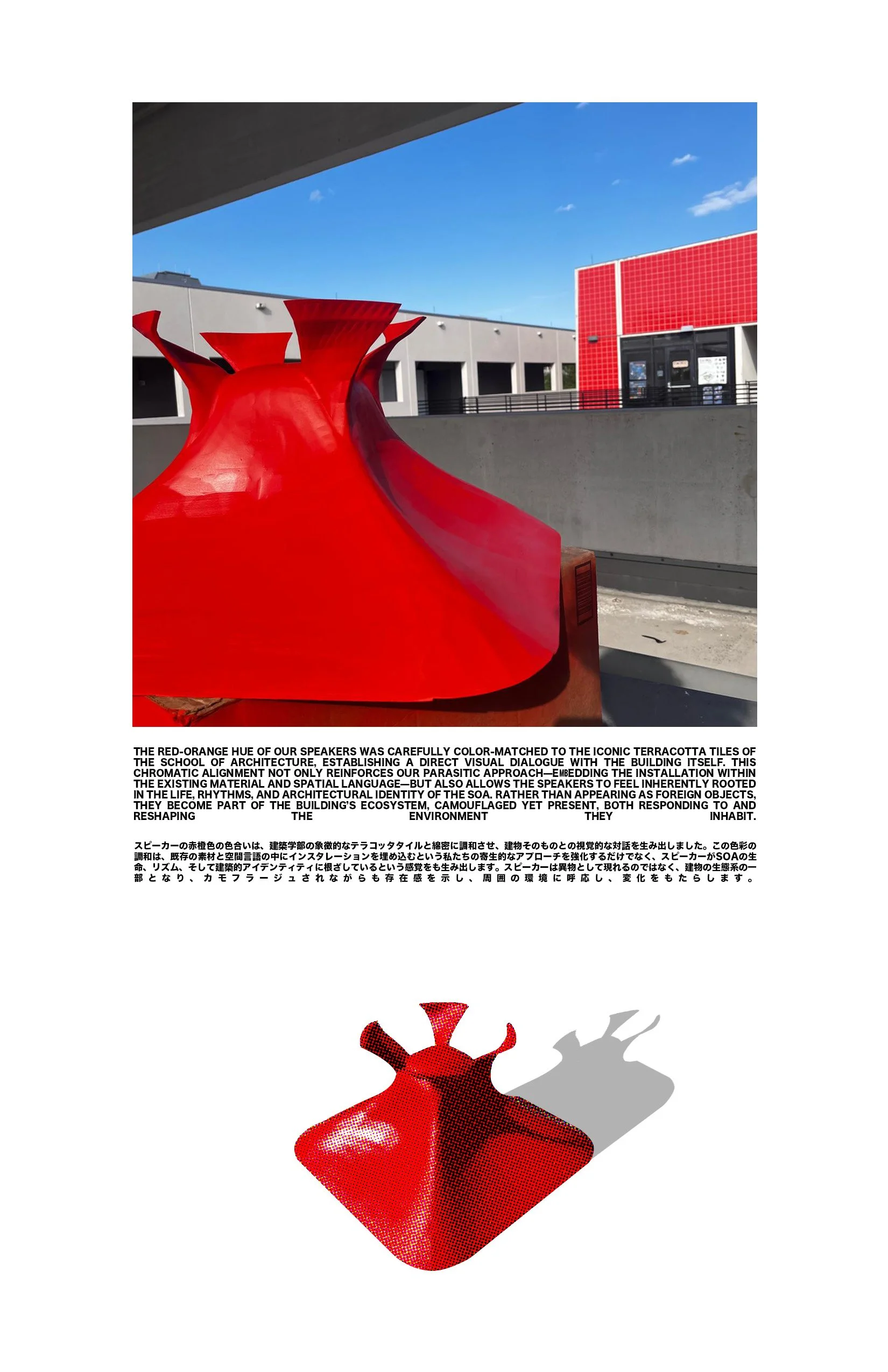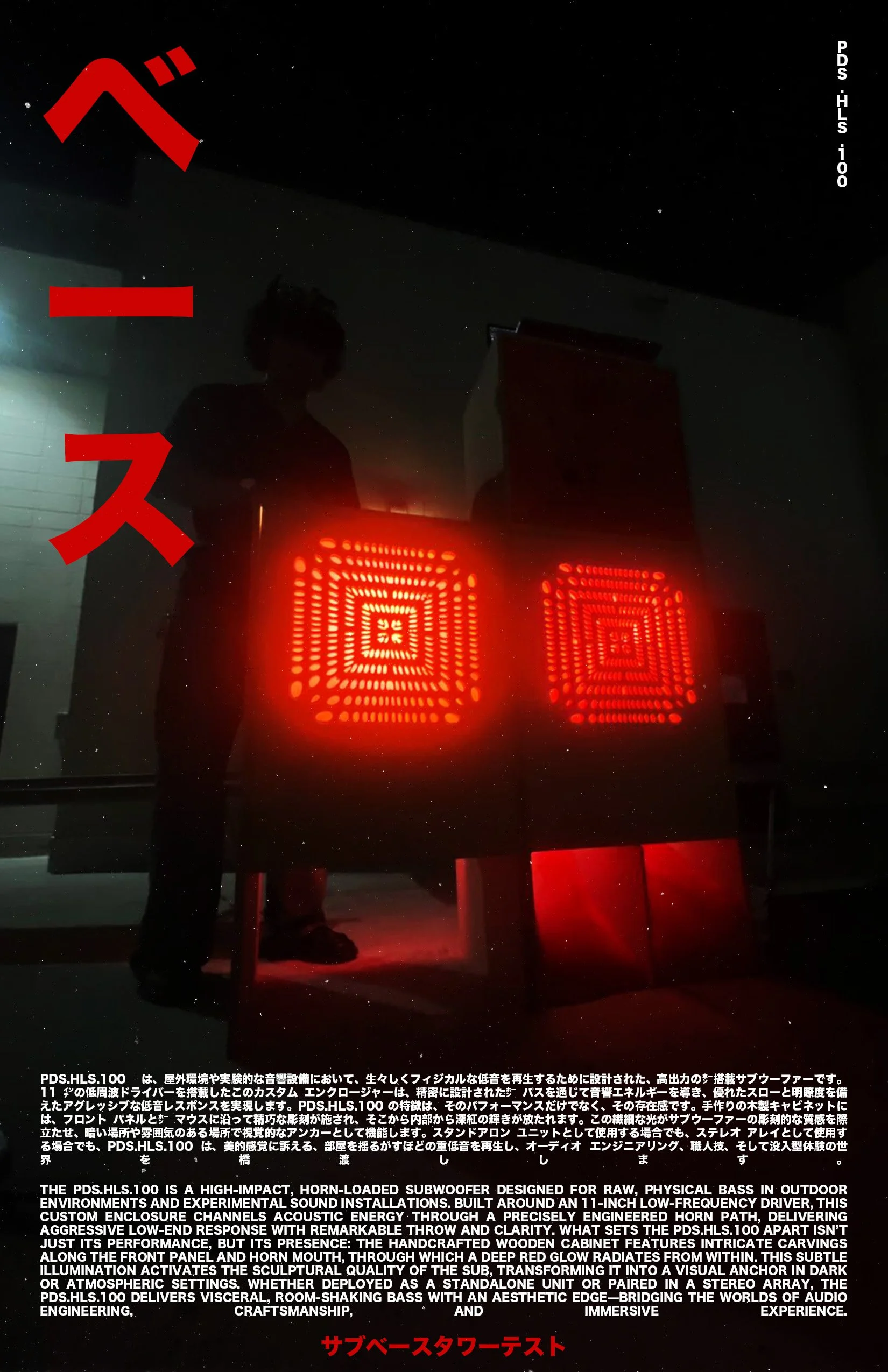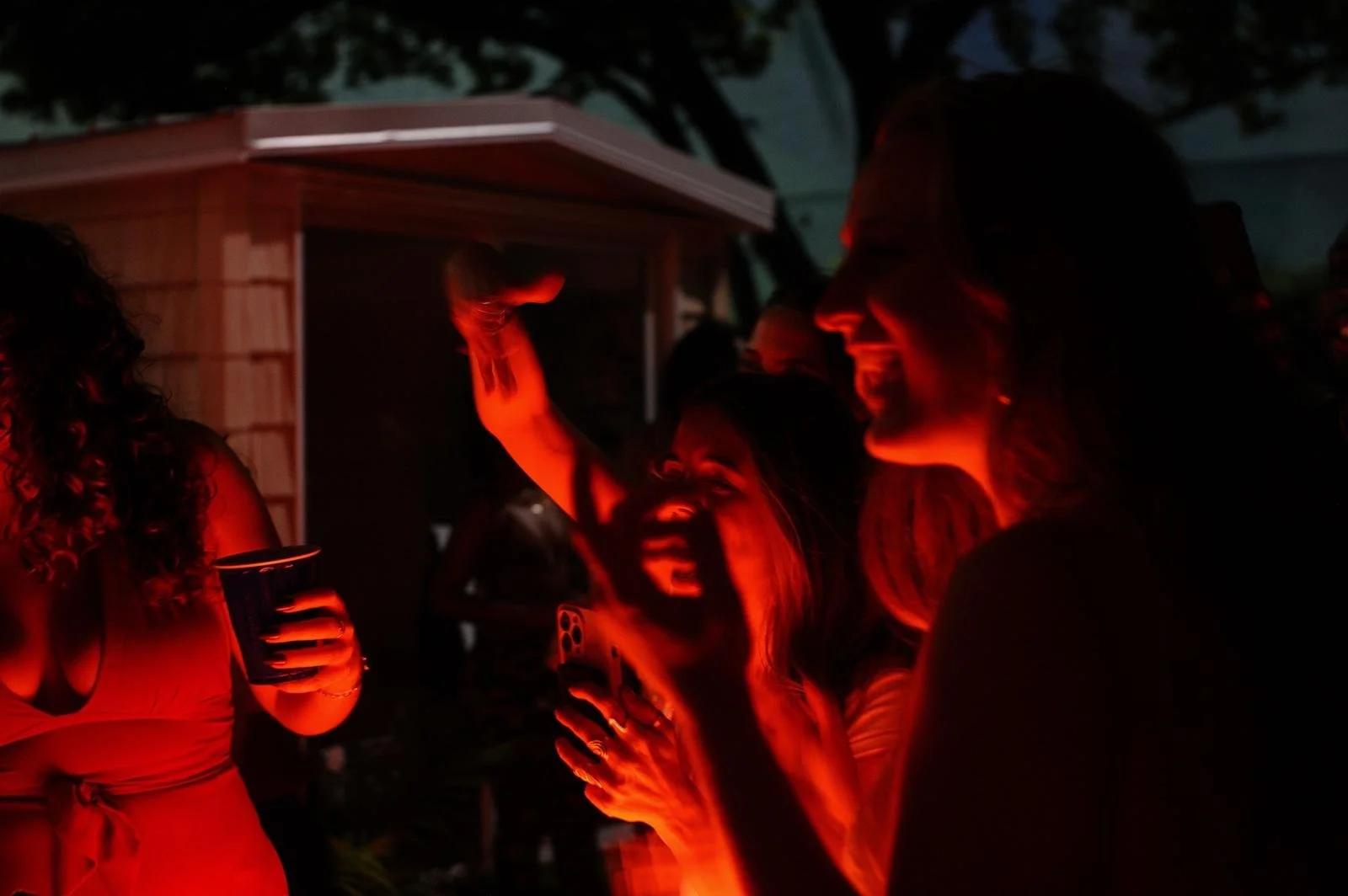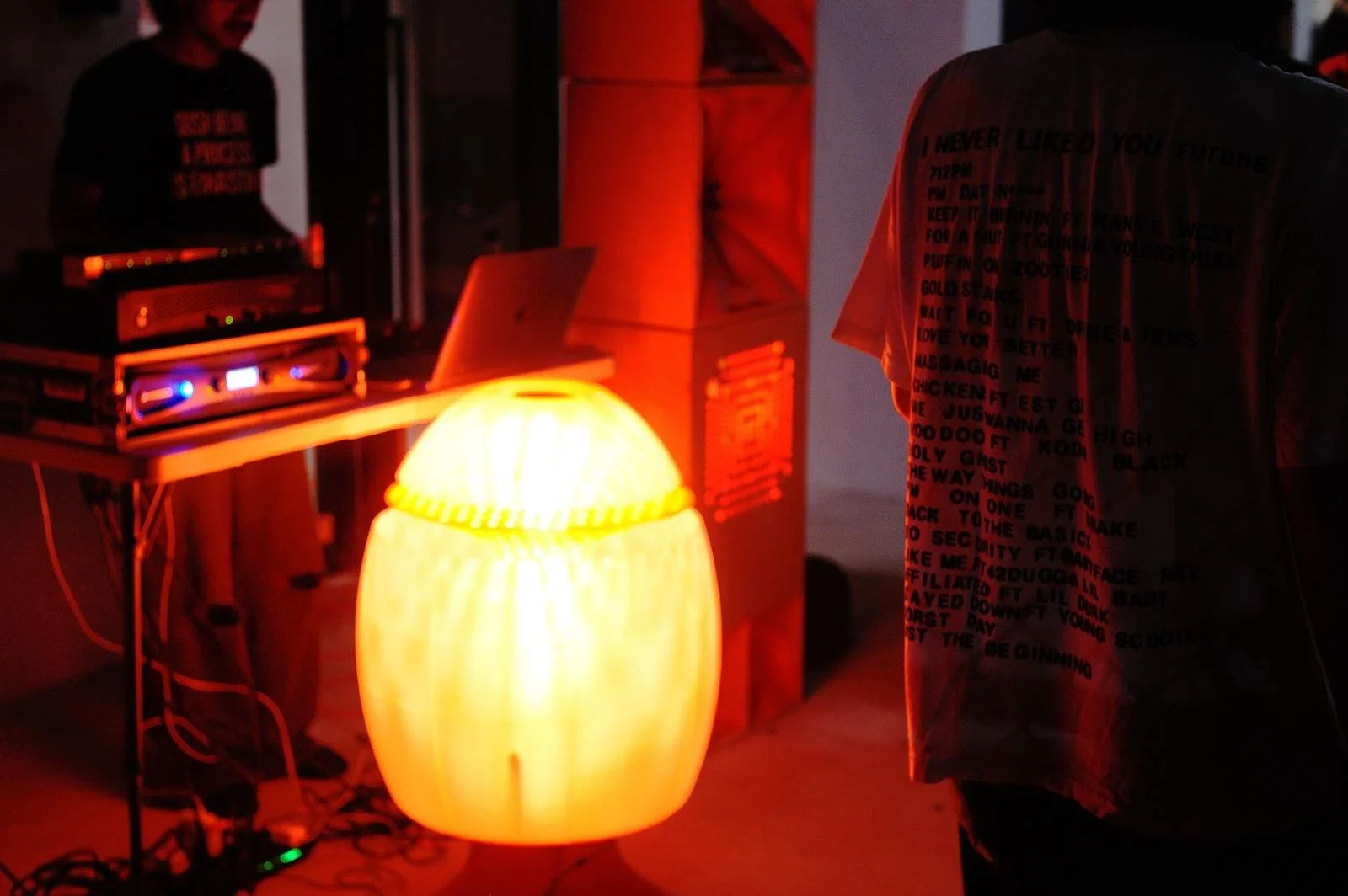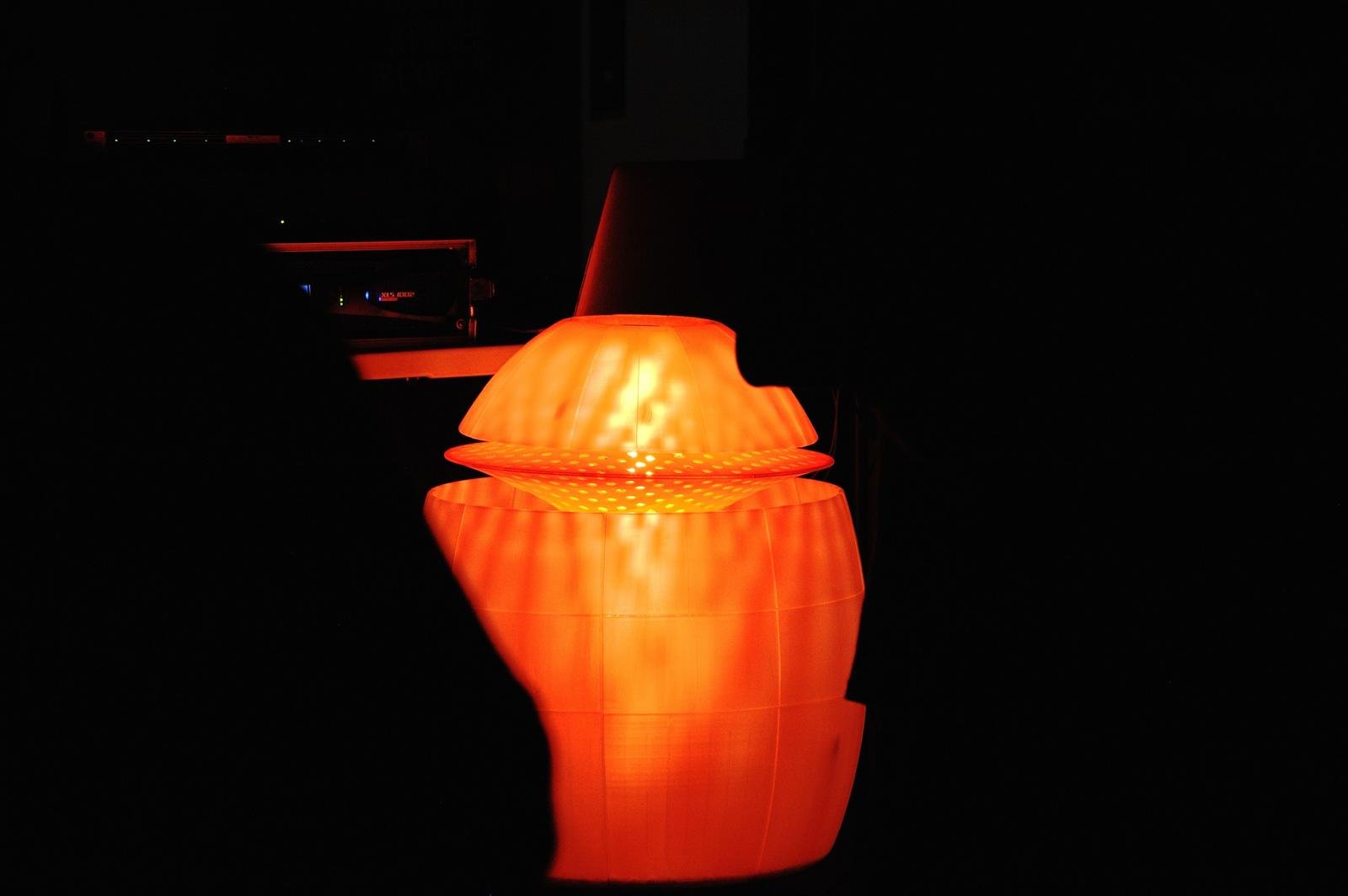RESONANCE
*
RESONANCE *





PROJECT IN PRACTICE
*
PROJECT IN PRACTICE *
AIAS ART NIGHT
Hosted by the American Institute of Architecture Students, Art Night was a vibrant evening that brought together architecture students and creatives from across disciplines to celebrate the intersection of design and artistic expression. Set within an immersive and collaborative atmosphere, the event featured a curated showcase of student work, from experimental models and digital media to painting, sculpture, and performance. It was a night that emphasized the richness and diversity of ideas emerging from the architectural community, and a reminder of how art and design extend beyond the bounds of the classroom.
A spontaneous addition to the exhibition lineup, our project unexpectedly became a central hub of energy and interaction. Originally unplanned, the installation organically evolved into a space for movement and celebration—guests gathered to dance, connect, and engage with the work in an embodied way. Rather than simply observing, they became participants, and our project became more than an exhibit—it was an experience. In this way, it captured the very essence of Art Night: creative expression in its most alive and collective form.
This outcome validated our core intention: to explore how underutilized or “dead” architectural spaces can be activated into sites of counterculture, collectivity, and participation. By reframing space as something fluid and responsive rather than fixed and formal, our project demonstrated how design can empower spontaneous community, resist conventional use, and create platforms for shared expression. In doing so, we not only contributed to the night—we reshaped how space itself was experienced.
MASTERS JURY
As part of our Master’s jury presentation, we transformed the architectural exhibition into a fully immersive nighttime event—bringing our project to life through a live, multi-sensory performance that activated every element of our design. With projectors casting dynamic, reactive visuals onto walls and structures, TouchDesigner served as the central nervous system—reading real-time input from the environment and translating it into an ever-shifting visual landscape. The performance wasn’t just something to watch; it was something to enter—a space that pulsed, glowed, and evolved in response to human presence, music, and motion.
Every component we had spent months building came together in this moment: custom speakers we designed and constructed ourselves filled the space with layered sound, ranging from deep, body-moving bass to sharp directional highs. Subwoofers, horn-loaded cabinets, and modular speaker stacks created a rich sonic architecture that gave the visuals a tactile presence. It was a complete convergence—hardware, software, sound, space, and bodies in motion. The event wasn’t just a presentation; it was a demonstration of our thesis in real time: that architecture can be reimagined as an interface for interaction, emotion, and countercultural gathering. This night marked not the end of our project, but a powerful proof of concept—one that blurred the lines between exhibition, performance, and community ritual.
CROWD
© CHRO.LIK
WYNWOOD -ALLULA
Our event at Allula, a design store nestled in the heart of Wynwood, became an unexpected magnet for the public. What began as an intimate setup quickly transformed into a full-on street-side performance, drawing a growing crowd of curious passersby and design enthusiasts alike. The system we had developed—featuring our custom-built speaker arrays and reactive visual components—created a multisensory atmosphere that spilled out from the store into the surrounding urban fabric. Pulsing lights, powered by TouchDesigner and synced with the soundscape, lit up the façade and sidewalk, turning the space into a glowing beacon in the night. The sound from our hand-crafted MEH horns and subwoofers created a rich, spatial audio field that extended beyond the storefront, making the event not just visible but audible from blocks away. People didn’t just stop to watch—they stayed, danced, and engaged, proving the power of immersive media and design to activate space and community in real time.




